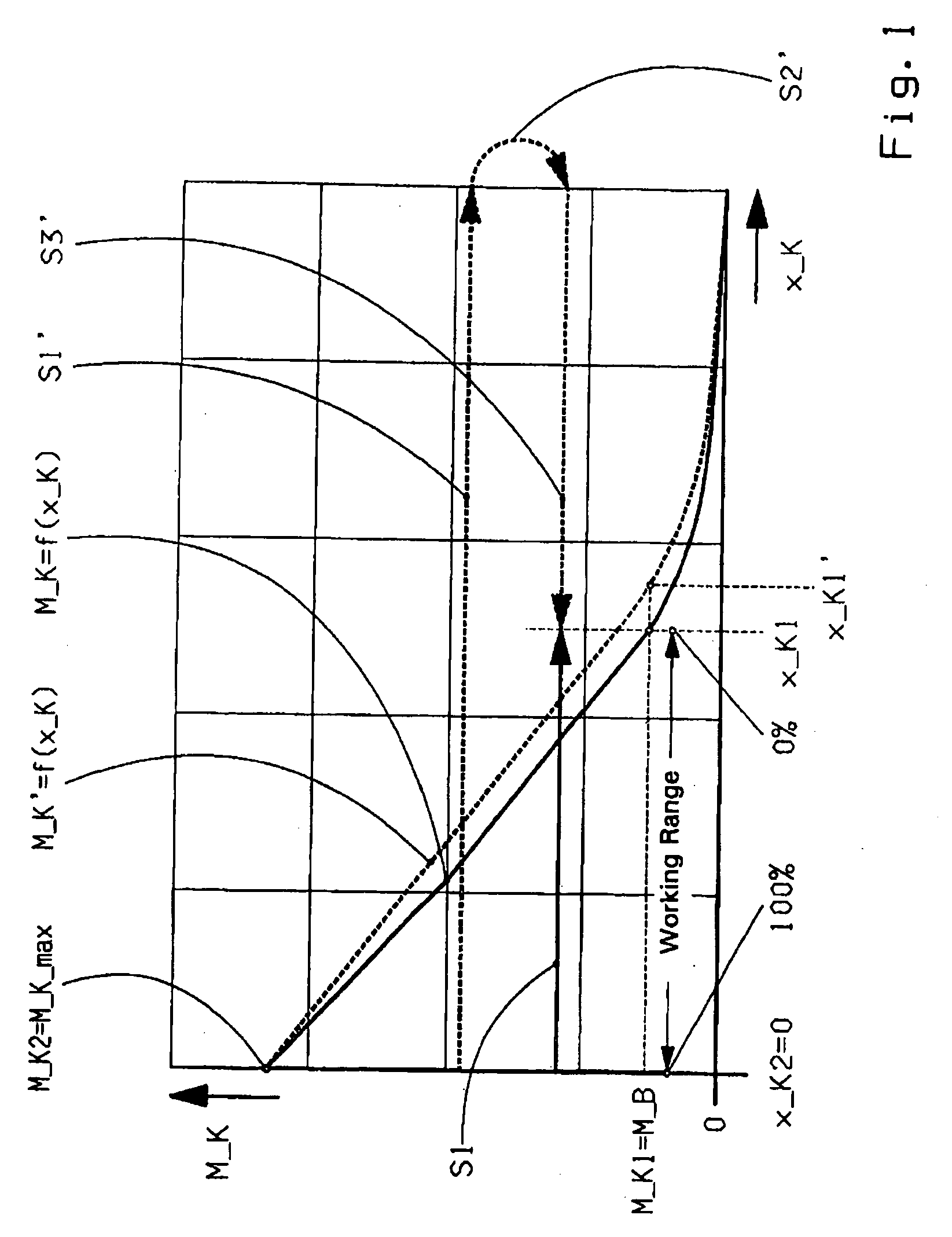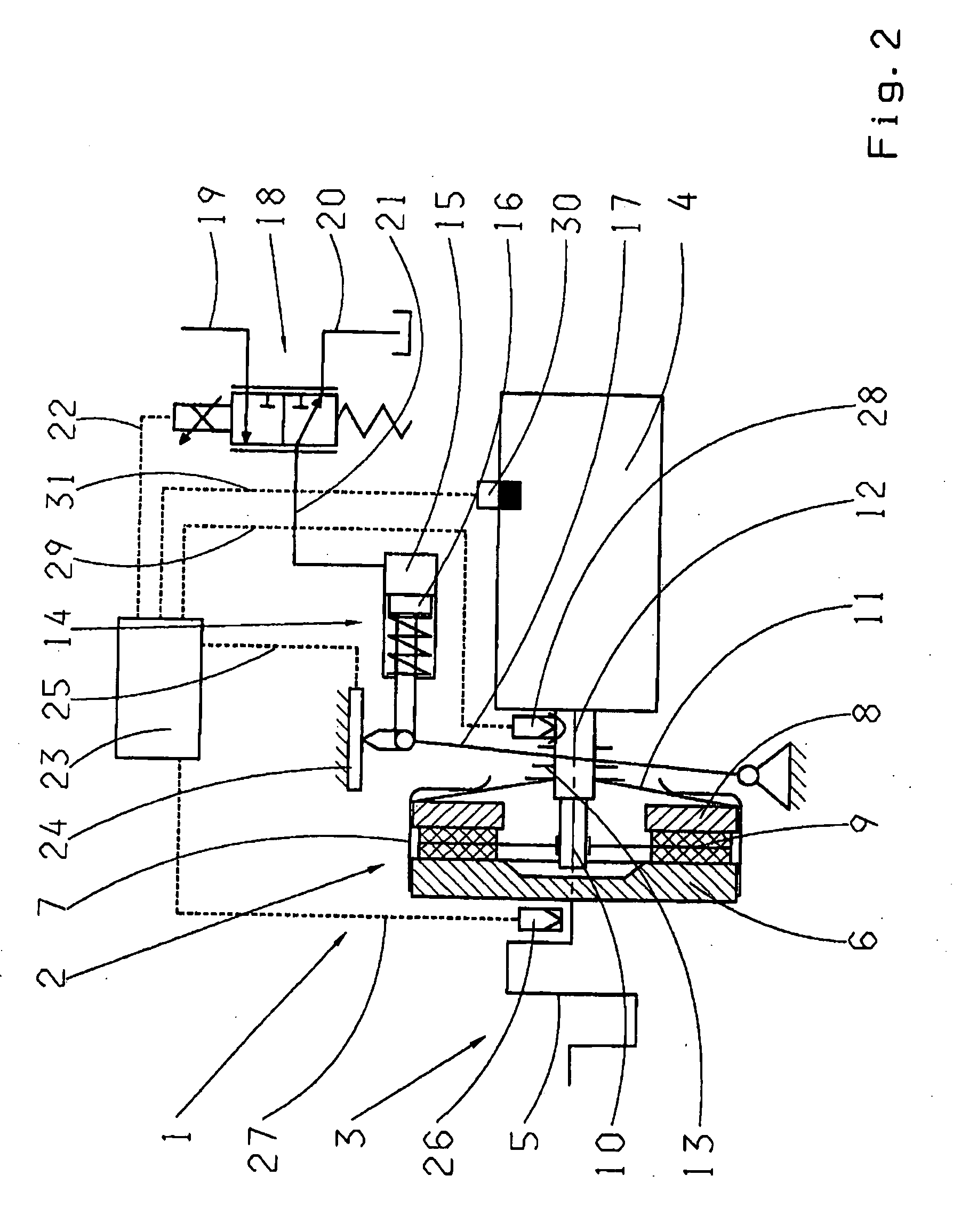Method for determining a torque characteristic of an automated friction clutch
a technology of friction clutch and torque characteristic, which is applied in the direction of slip coupling, coupling, instruments, etc., can solve the problems of poor precision of fixed point determination, strong temperature-dependent and increasing drag torque, and delay in normal driving operation of motor vehicles, etc., to achieve the effect of more accurate determination
- Summary
- Abstract
- Description
- Claims
- Application Information
AI Technical Summary
Benefits of technology
Problems solved by technology
Method used
Image
Examples
Embodiment Construction
[0020]FIG. 2 shows an example of a clutch arrangement 1 for implementing a method according to the invention. In the Figure, a friction clutch 2, made as a single-disk, dry clutch, is shown arranged in the force flow between a drive engine 3 made as a piston-driven internal combustion engine and a drive transmission 4.
[0021]The part of the friction clutch 2 on its input side is formed by a flywheel 6 attached to a crankshaft 5 of the drive engine 3 and a pressure plate 8 connected thereto via a clutch cage 7. The part of the friction clutch 2 on its output side is formed by a carrier disk 9 arranged axially between the flywheel 6 and the pressure plate 8, which is mounted rotationally fixed to, but able to move axially on an input shaft 10 of the transmission 4. By virtue of a contact pressure spring 11 made as a membrane spring and arranged between the clutch cage 7 and the pressure plate 8, the friction clutch 2 is engaged in its rest position free from any control force, but can ...
PUM
 Login to View More
Login to View More Abstract
Description
Claims
Application Information
 Login to View More
Login to View More - R&D
- Intellectual Property
- Life Sciences
- Materials
- Tech Scout
- Unparalleled Data Quality
- Higher Quality Content
- 60% Fewer Hallucinations
Browse by: Latest US Patents, China's latest patents, Technical Efficacy Thesaurus, Application Domain, Technology Topic, Popular Technical Reports.
© 2025 PatSnap. All rights reserved.Legal|Privacy policy|Modern Slavery Act Transparency Statement|Sitemap|About US| Contact US: help@patsnap.com



